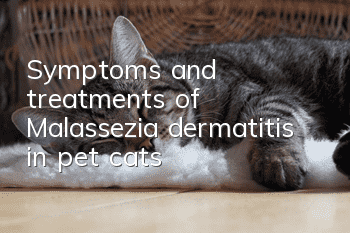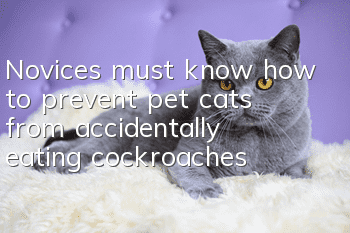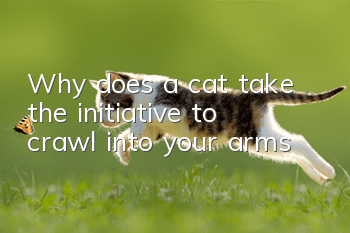Symptoms and treatments of Malassezia dermatitis in pet cats

Feline Malassezia dermatitis is usually caused by the excessive proliferation of Malassezia. It is very common clinically and is often caused by other underlying diseases or is complicated by other skin diseases. This disease is a classic example of pruritus, which is completely different from the symptoms of ringworm, which is a classic cause of alopecia.
Malassezia is a thick-walled, single-celled yeast. Single-celled Malassezia are generally oval, round or cylindrical. The cells form a "peanut" shape as they bud. Malassezia can be passed to the pups through the mother's reproductive tract, or through postpartum licking and grooming. Most healthy animals will have Malassezia in the ear canal, anal glands, between the fingers and at the mucocutaneous junction (lips, foreskin, vagina and anus). Other parts of the body will not appear. Malassezia stored in mucous membranes can be spread to the skin through licking or grooming.
Malassezia may colonize the superficial layers of the skin epidermis and the stratum corneum in the infundibulum area of hair follicles. Malassezia forms a symbiotic relationship with epidermal Staphylococcus aureus. Together, they create mutually beneficial growth factors and a good microenvironment. Pyoderma is often found to be complicated by Malassezia dermatitis. Therefore, controlling the number of bacteria during treatment is more effective than antifungal treatment alone.
1. Epidemiology
In a balanced state, Malassezia pachyderma is a symbiotic bacterium in healthy animals, living on the surface of keratinocytes. The antifungal effects of epidermal lipids and non-specific defense mechanisms (such as serum lgA) prevent its excessive growth. Added value and infection. Malassezia has a symbiotic relationship with commensal Staphylococcus aureus, and Malassezia dermatitis is often complicated by bacterial overproliferation or pyoderma. Therefore, controlling the number of bacteria during treatment is more effective than antifungal treatment alone.
2. Pathogenesis
1. Conditional pathogens
a. When the host defense mechanism (physical, chemical, immune) is damaged, value-added and infection increase.
b. For example: atopic dermatitis, other allergies, endocrinopathy, keratinization defects, immunosuppression (FIV/FELV), previous antibiotic treatment, excessive humidity, skin folds, chronic glucocorticoid treatment.
2. Destroy the stratum corneum
a. Itchy lesions (allergy).
b. Biochemistry: moisture, immune abnormalities, keratinization defects lead to lipid changes on the skin surface, and endocrinopathy.
C. Yeast and bacterial enzymes (esterase, lipoxygenase, protease, urease).
3. The immune system is exposed to Malassezia antigens and products.
4. Malassezia dermatitis/hypersensitivity reaction.
Malassezia secretes various enzymes to change the pH value of the skin, activate complement and release inflammatory mediators, making the skin's microenvironment more suitable for horses.Lassezia and Staphylococcus aureus survive and create inflammation and itching.
The warm and moist microenvironment created by special parts of the host skin (skin folds, hanging lips, hairy feet), inflammation, exudation, self-licking, etc. is particularly suitable for Malassezia. Keratinization defects and endocrinology can also increase humidity and alter the quantity and quality of sebum. However, the relationship between sebum production and Malassezia proliferation remains unclear. In addition, defects in self-scratching, keratinization, or metabolism may allow Malassezia to establish a basis for proliferation.
3. Clinical symptoms
1. Erythema, yellow flakes and scabs, greasy and foul-smelling skin.
2. Face, feet, ventral side of neck, abdomen, between fingers, nail beds, and skin folds.
3. Otitis with yellow or brown discharge.
4. Itching
Systemic infections, otitis media, paronychia, and chin acne may be seen in tumors and severely diseased cats, with Devincos and Sphynx cats being susceptible.
4. Treatment methods
Malassezia dermatitis is closely related to the cat’s own resistance, so it is important to strengthen nutrition. You can give it some boiled fish and nutritional paste. Give it a bath with a medicinal bath, the recommended one is Piyankang.
In addition, shampoos can be used for external treatment: chlorhexidine 2%, enconazole 2%; selenium sulfide; ketoconazole; piroctone, cipirostrolethanolamine with monosaccharide. Or take it orally:
1. Ketoconazole: 5-10mg/kg, take with food for 14-28 days, there may be side effects
2. Itraconazole: 5mg/kg, has fewer side effects and is more expensive. It can be taken one week and stopped one week. 3. Terbinafol: 30-40mg/kg.
- Why does the kitten have diarrhea?
- Does cat grass have any effect on people?
- There is a small amount of blood in the cat's vomit
- Can cats eat shredded vegetarian steak?
- Little female cat’s name
- Can cat deworming medicine be mixed in cans and eaten?
- How to help cats adapt to new environments quickly?
- Why does Garfield's eyes keep crying? The reason why Garfield sheds tears!
- What breed is the British Shorthair cat?
- Cold symptoms in kittens should not be confused with diseases



